Behavioral competencies and cognitive abilities of the employees to adapt and manage the digital transformation process.
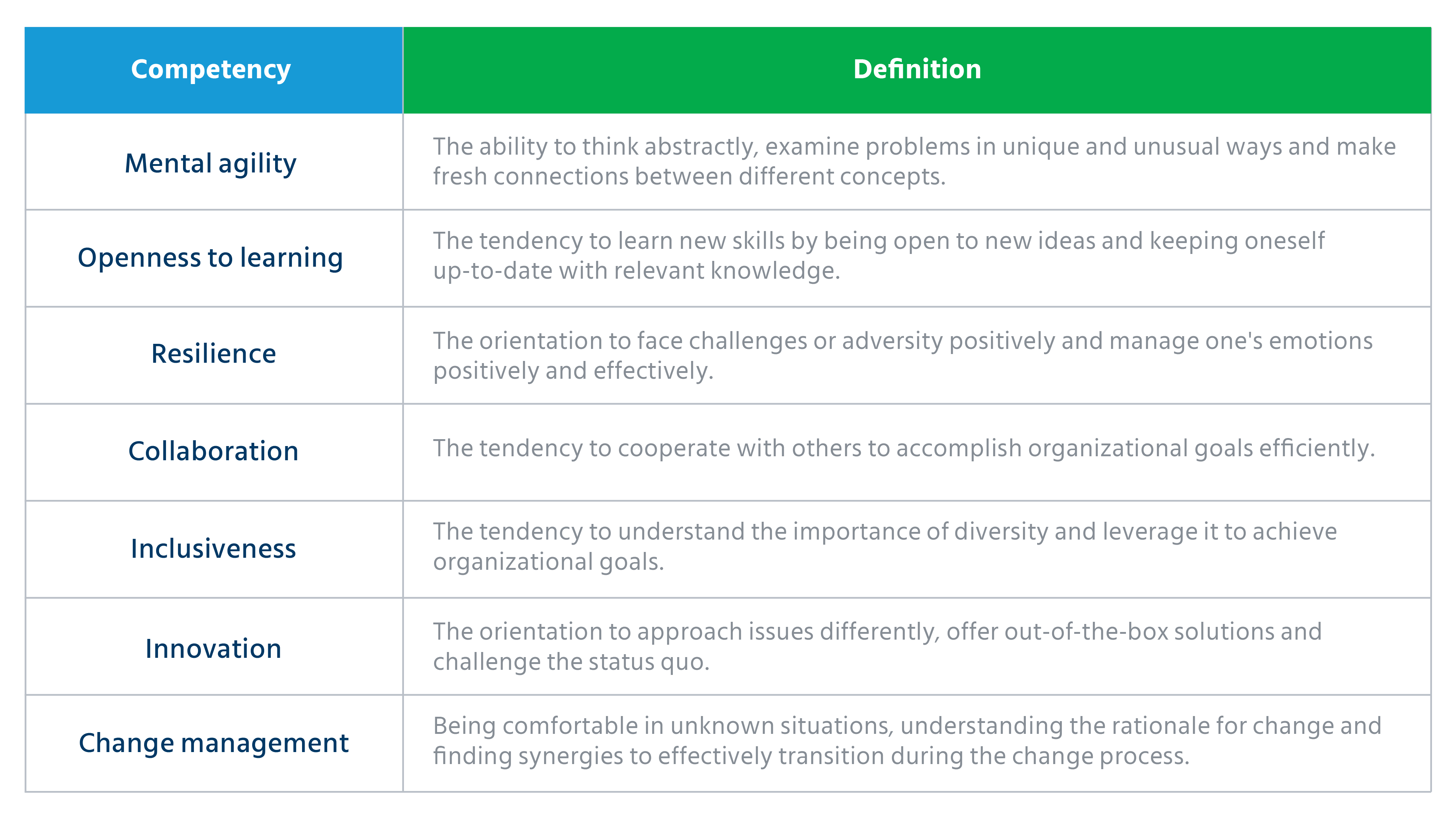
1.1 Tool composition:
- Mettl Personality Profiler (MPP) is an innovative, evidence-based personality assessment that measures critical, work-relevant personality traits. It is based on the well-established model of the broad “Big Five” personality factors. It consists of 86 items to be rated on a semantic differential scale to measure 26 facets, which form the building blocks of the assessment. These scales span a wide domain of personality and are mapped to companies’ or job roles’ specific performance models or behavioral competencies to obtain the optimal prediction of job success. MPP is a global tool that is standardized and normed in various geographies, including India, the US, Europe, South Africa, South East Asia, LATAM & the Middle East. MPP’s reliability ranges from 0.65 – 0.85, and estimates of convergent validity range from 0.4 – 0.75.
- Mettl Test for Abstract Reasoning (MTAR) is a nonverbal assessment tool designed to measure an individual’s ability to perceive and think clearly, make meaning out of ambiguity, and formulate new concepts when faced with novel information. The tool uses geometrical figures in the matrices, and the candidates have to identify the pattern being followed and complete the pattern accordingly. Respondents need to answer 25 questions in 20 minutes. The reliability of the MTAR is .70, and the criterion validity estimates range from .24 to .32.
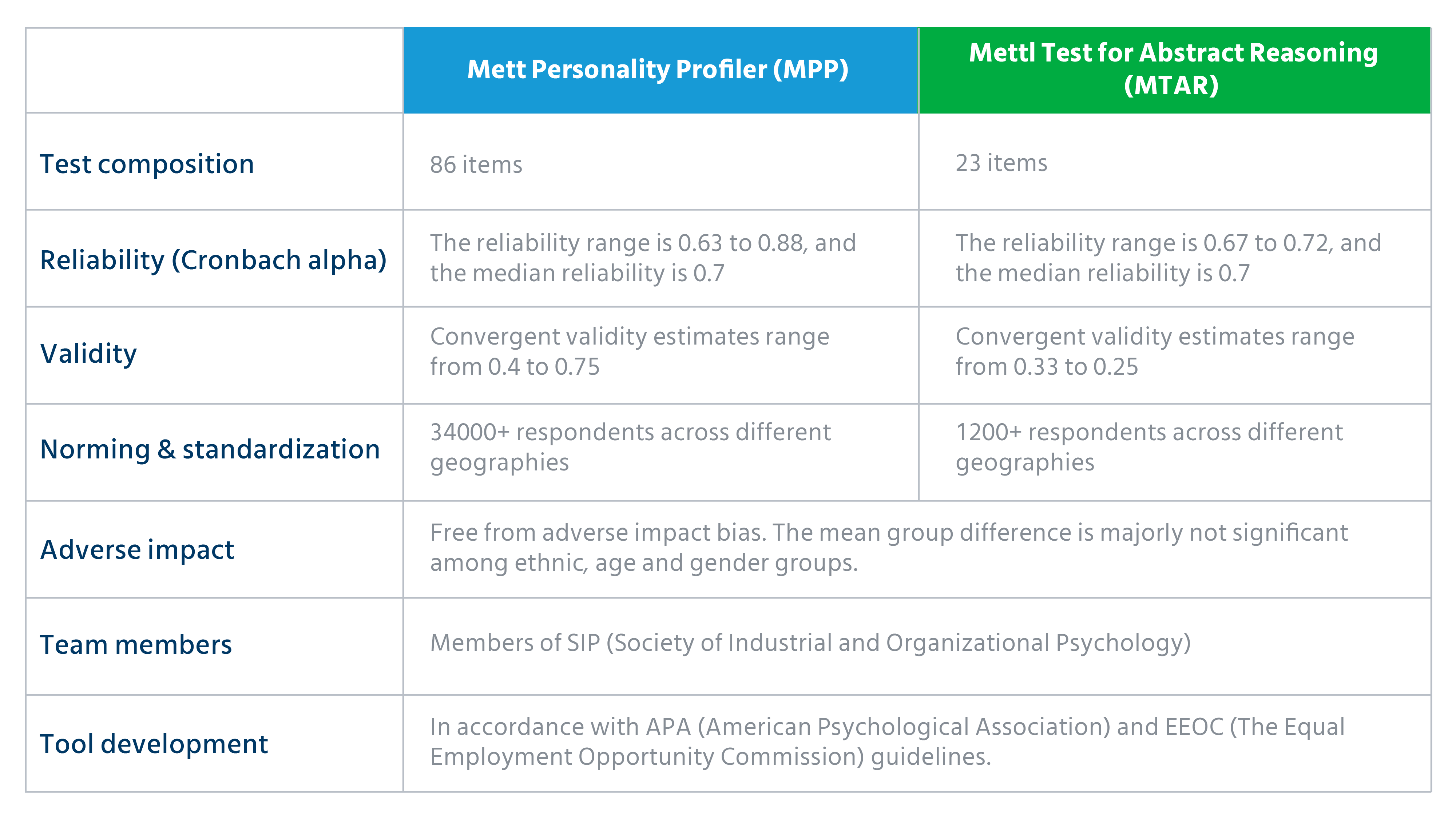
Based on the competencies included in the digital potential framework, an Individual can be classified into 9 categories. It helps organizations to identify employees on their level of digital potential based on their score on cognitive ability (mental agility) and 6 behavioral competencies (Openness to learning, resilience, collaboration, inclusiveness, innovation and change management), which can be taken as the first step toward laying down a developmental plan.
In the matrix, an individual’s average score on a set of six behavioral competencies has been used on the x-axis and an individual’s score on cognitive ability on the y-axis. A cognitive ability score represents the ability to think abstractly and uniquely examine problems, which, in turn, also facilitates the learning process. Since digital readiness requires a higher ability to learn new digital tools and technologies, the mental agility score has been used to represent the specific digital capability level of the respondent along with their scores on behavioral competencies.
The matrix gives a clear picture of the individuals’ understanding vis-a-vis digital capability level. The 9-box matrix further maps the individual to decide on the next course of action, ranging from an introductory session on digital readiness to training programs designed for specific digital skills required by the employee to perform their job efficiently.
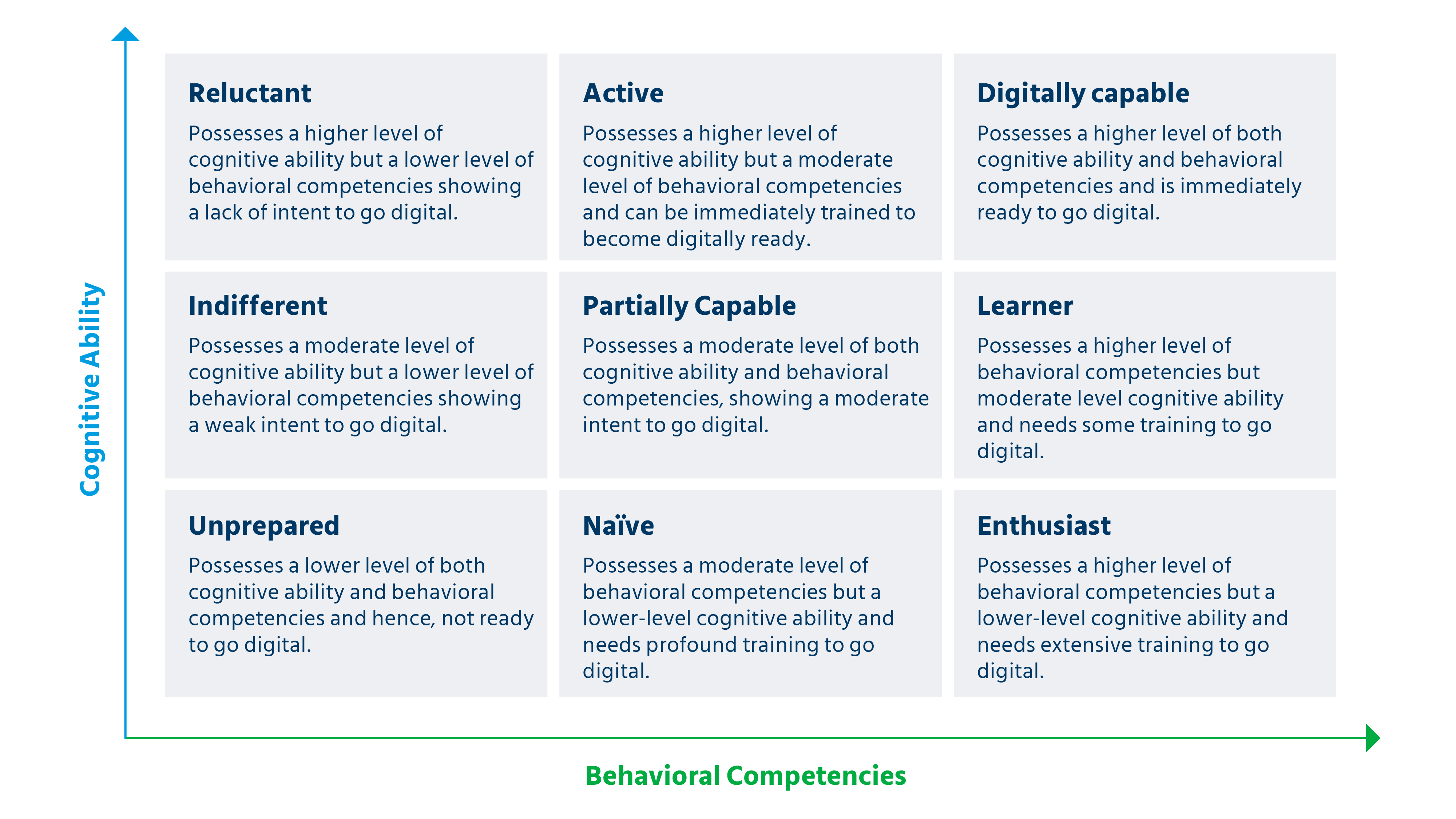
1.2 A brief description of profiles in the 9-box:
Description: Possesses a lower level of both cognitive ability and behavioral competencies and hence, not ready to go digital.
The immediate course of action: One needs to start a conversation with them about how digital transformation will benefit the business and is critical for the future of individual employees.
Description: Possesses a moderate level of cognitive ability but a lower level of behavioral competencies, showing a weak intent to go digital.
The immediate course of action: Instill a sense of urgency to achieve digital readiness and explain the primary benefits of digital readiness, which include higher productivity, higher organizational performance and better innovation capabilities.
Description: Possesses a higher level of cognitive ability but a lower level of behavioral competencies, showing a lack of intent to go digital.
The immediate course of action: Explain the extent to which digital readiness is a priority for the company. Converse about the impact of digital technologies in disrupting the present business models and creating new ones.
Description: Possesses a moderate level of behavioral competencies but a lower-level cognitive ability and needs profound training to go digital.
The immediate course of action: Identify the digital technology in which they need immediate training. Explain to them the importance of this specific digital technology in the present competitive digital landscape.
Description: Possesses a higher level of behavioral competencies but a lower-level cognitive ability and needs extensive training to go digital.
The immediate course of action: Since they already possess a digital mindset, it is essential to identify the digital technology in which they need to be trained. Please consider that this training should not be of high pace or highly advanced at the onset.
Description: Possesses a moderate level of both cognitive ability and behavioral competencies, showing a moderate intent to go digital.
The immediate course of action: Devise a long-term plan to develop them as future digital talent and share the objectives of digital transformation with them clearly.
Description: Possesses a higher level of cognitive ability but a moderate level of behavioral competencies and can be immediately trained to become digitally ready.
The immediate course of action: Develop a plan with their inputs to utilize their capacity to think and act digitally.
Description: Possesses a higher level of behavioral competencies but moderate levels of cognitive ability and needs some training to go digital.
The immediate course of action: Develop a plan for continuous digital learning, helping to upskill through bite-sized content.
Description: Possesses a higher level of both cognitive ability and behavioral competencies and is immediately ready to go digital.
The immediate course of action: Identify them as digital coaches and appoint them as mentors to make others digitally ready by motivating others to adopt digital technologies.









 Behavioral Competencies
Behavioral Competencies Cognitive Competencies
Cognitive Competencies Coding Competencies
Coding Competencies Domain Competencies
Domain Competencies



















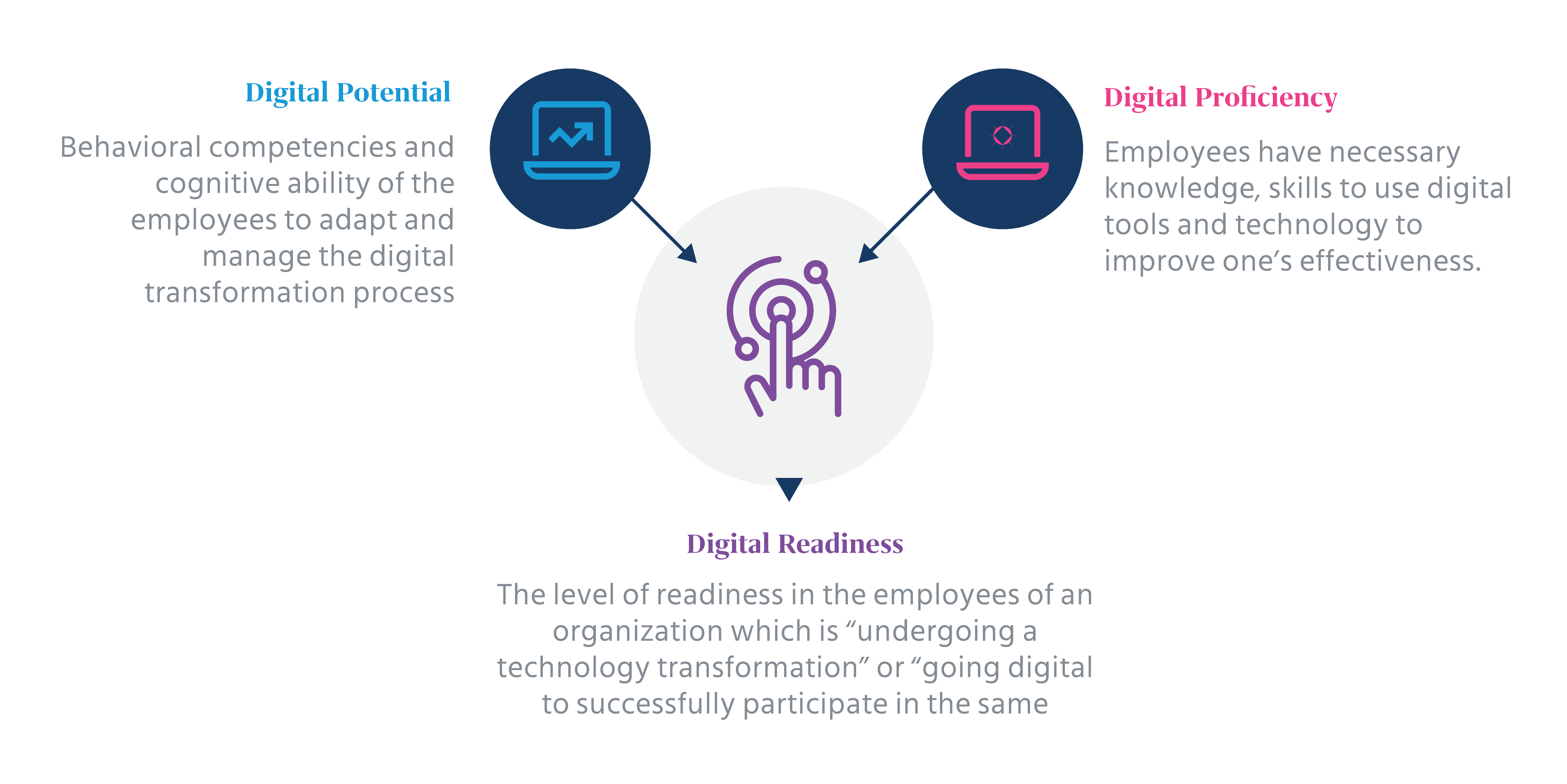



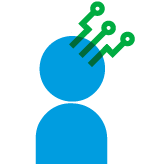





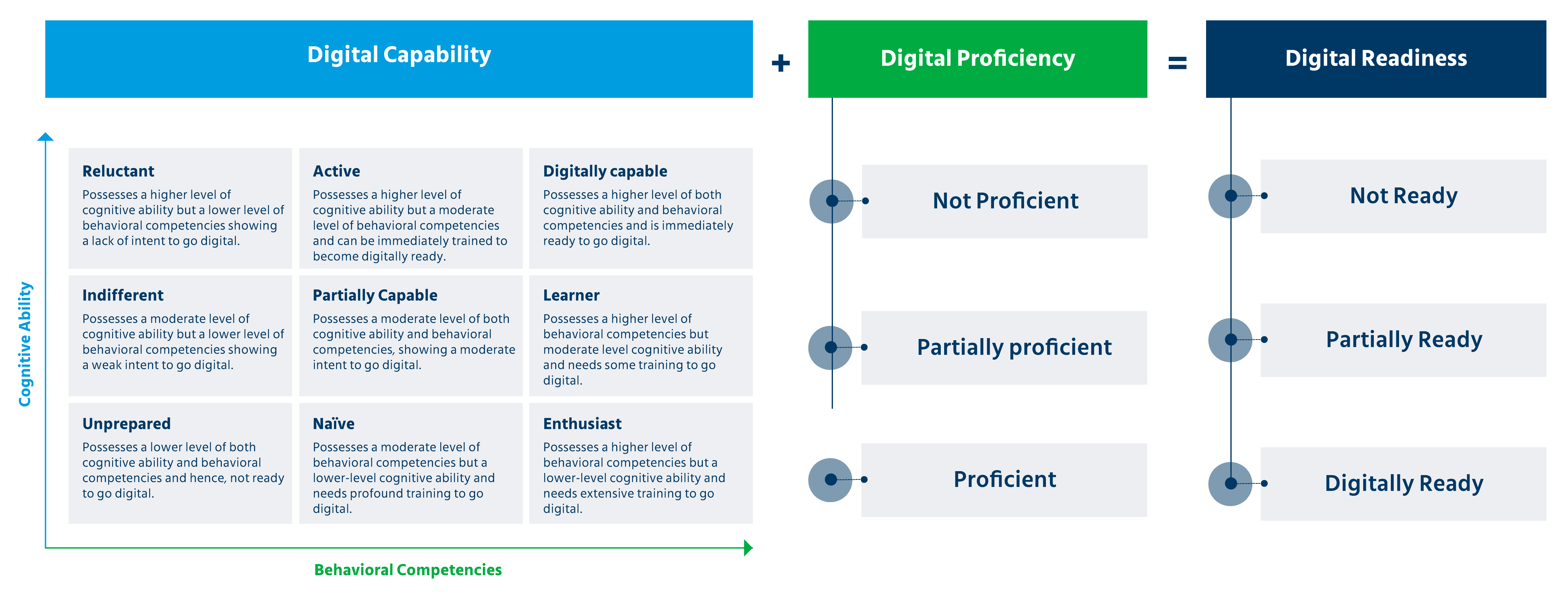









Would you like to comment?